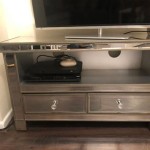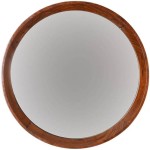Does Apple iPad Air 2 Have Screen Mirroring?
The Apple iPad Air 2, released in 2014, offered a significant leap in performance and design compared to its predecessor. A key consideration for many tablet users is the ability to share the iPad's screen with other devices, commonly known as screen mirroring. This article explores the screen mirroring capabilities of the iPad Air 2, outlining the methods available, the necessary hardware requirements, and potential limitations. Understanding these aspects allows users to maximize the utility of their iPad Air 2 for presentations, entertainment, and collaborative activities.
Screen mirroring, in essence, allows the user to duplicate the display of their iPad Air 2 onto a larger screen, such as a television, projector, or computer monitor. This can be useful for a variety of purposes, ranging from viewing photos and videos with family and friends to delivering presentations in a professional setting. Several methods facilitate this functionality on the iPad Air 2, each with its own advantages and drawbacks.
The primary methods for screen mirroring on the iPad Air 2 include using Apple's AirPlay technology, connecting via a wired adapter, or utilizing third-party screen mirroring applications. Each approach relies on different hardware and software components and offers varying levels of performance and compatibility.
AirPlay and Apple TV
The most seamless and widely recognized method for screen mirroring with an iPad Air 2 is through Apple's AirPlay technology. AirPlay allows users to wirelessly stream audio and video content from their iPad to an Apple TV or an AirPlay 2-compatible smart TV. The Apple TV acts as a receiver, decoding the streamed signal and displaying it on the connected screen. The setup process is generally straightforward, requiring both the iPad Air 2 and the Apple TV to be connected to the same Wi-Fi network.
To initiate AirPlay mirroring, users typically access the Control Center on their iPad Air 2 by swiping up from the bottom of the screen (or swiping down from the top-right corner on newer iPadOS versions). Within the Control Center, the "Screen Mirroring" option allows selection of an available AirPlay device. Upon selection, the iPad's display is mirrored on the chosen screen. Users can then navigate apps, play videos, or present slideshows, all of which are simultaneously displayed on the larger screen.
AirPlay offers several advantages, including its wireless nature, ease of use, and compatibility with a wide range of Apple devices. However, it is reliant on a stable Wi-Fi connection. A weak or congested network can lead to lag, buffering, or disconnections, hindering the screen mirroring experience. The quality of the mirrored image also depends on the network bandwidth and the capabilities of the receiving device. Furthermore, AirPlay requires an Apple TV or a compatible smart TV, representing an additional cost for users who do not already own one.
AirPlay 2 expands upon the original AirPlay functionality, offering multi-room audio support and improved device management. While the iPad Air 2 supports AirPlay, its specific compatibility with AirPlay 2 features may vary depending on the iPadOS version installed. Updating to the latest compatible iPadOS version is generally recommended to ensure optimal AirPlay performance and access to the most recent features.
Wired Connection via Adapters
For situations where a wireless connection is unreliable or unavailable, a wired connection offers a more stable alternative for screen mirroring. The iPad Air 2 features a Lightning port, which can be used in conjunction with various adapters to connect to external displays. Apple offers a Lightning Digital AV Adapter, which allows users to connect their iPad to a television, projector, or monitor via an HDMI cable.
Using a wired adapter offers several benefits, including a more reliable connection and potentially higher image quality compared to wireless AirPlay. It eliminates the reliance on a Wi-Fi network, making it suitable for environments with poor or no wireless connectivity. However, it requires the purchase of an appropriate adapter and an HDMI cable, adding to the overall cost. Furthermore, the wired connection can be less convenient than a wireless connection, limiting the user's mobility and requiring physical proximity to the display device.
When using a Lightning Digital AV Adapter, the iPad Air 2 automatically detects the connected display and adjusts its output accordingly. The mirrored image is typically displayed at the native resolution of the connected display, ensuring optimal image quality. Users can then navigate their iPad as usual, with the display mirrored on the external screen.
Other adapters are also available, such as Lightning to VGA adapters, which allow connection to older displays that lack HDMI ports. However, HDMI is generally preferred due to its ability to transmit both audio and video signals, simplifying the setup process. The availability and compatibility of specific adapters may vary, so it is essential to verify compatibility with the iPad Air 2 before purchasing.
Third-Party Screen Mirroring Applications
In addition to Apple's built-in AirPlay functionality and wired adapters, several third-party applications offer screen mirroring capabilities for the iPad Air 2. These applications often utilize alternative protocols or proprietary technologies to stream the iPad's display to a variety of devices, including computers, smart TVs, and streaming devices.
These applications often work by installing a receiver application on the target device (e.g., a computer or smart TV) and a sender application on the iPad Air 2. The sender application captures the iPad's screen and transmits it to the receiver application, which then displays it on the connected screen. Popular third-party screen mirroring applications include AirServer, Reflector, and LetsView. These applications often offer advanced features such as screen recording, annotation tools, and remote control capabilities.
One advantage of using third-party screen mirroring applications is their broader compatibility with different devices and operating systems. They may support devices that do not natively support AirPlay or HDMI connections, providing greater flexibility in screen mirroring options. However, the performance and reliability of these applications can vary depending on the specific application, the network conditions, and the capabilities of the devices involved. Some applications may also require a paid subscription or license for full functionality.
It is crucial to research and select third-party screen mirroring applications carefully, considering factors such as user reviews, features, compatibility, and security. Some applications may collect user data or contain hidden malware, so it is essential to download applications only from reputable sources and to review their privacy policies before installation.
The overall performance of third-party applications is often dependent on network conditions and the processing power of both the sending and receiving devices. Lag, buffering, and disconnections can occur if the network is congested or the devices are underpowered. Wired connections may provide a more stable experience compared to Wi-Fi, especially for demanding applications such as gaming or video playback.
Using third-party screen mirroring software often involves a more complex setup process compared to using Apple's native AirPlay functionality or wired adapters. Users may need to configure network settings, install additional software, and troubleshoot compatibility issues. However, the added flexibility and features offered by these applications may make them a worthwhile option for users who require advanced screen mirroring capabilities.
Ultimately, the choice of screen mirroring method depends on the user's specific needs and preferences. AirPlay offers a simple and convenient wireless solution for Apple users, while wired adapters provide a more stable and reliable connection. Third-party screen mirroring applications offer a broader range of compatibility and features but may require more technical expertise to set up and maintain.

How To Screen Mirror Ipad With Ipados 17

How To Connect An Ipad A Tv Or Display Airplay Adapter

Apple Ipad Air 2 2024 Control Center At T

Ipad Air 2 Review One Year On Still The Best Mid Size Tablet Macworld

Use Airplay To Stream Or Mirror The Screen Of Your Ipad Apple Support

How To Mirror Iphone Ipad Easily In 2024 Ultimate Guide

How To Connect An Ipad A Tv Or Display Airplay Adapter

Use Airplay To Stream Or Mirror The Screen Of Your Iphone Ipad Apple Support

In Depth Review Apple S Ipad Air 2 And Mini 3 Appleinsider

Guide How To Mirror My Iphone Ipad








